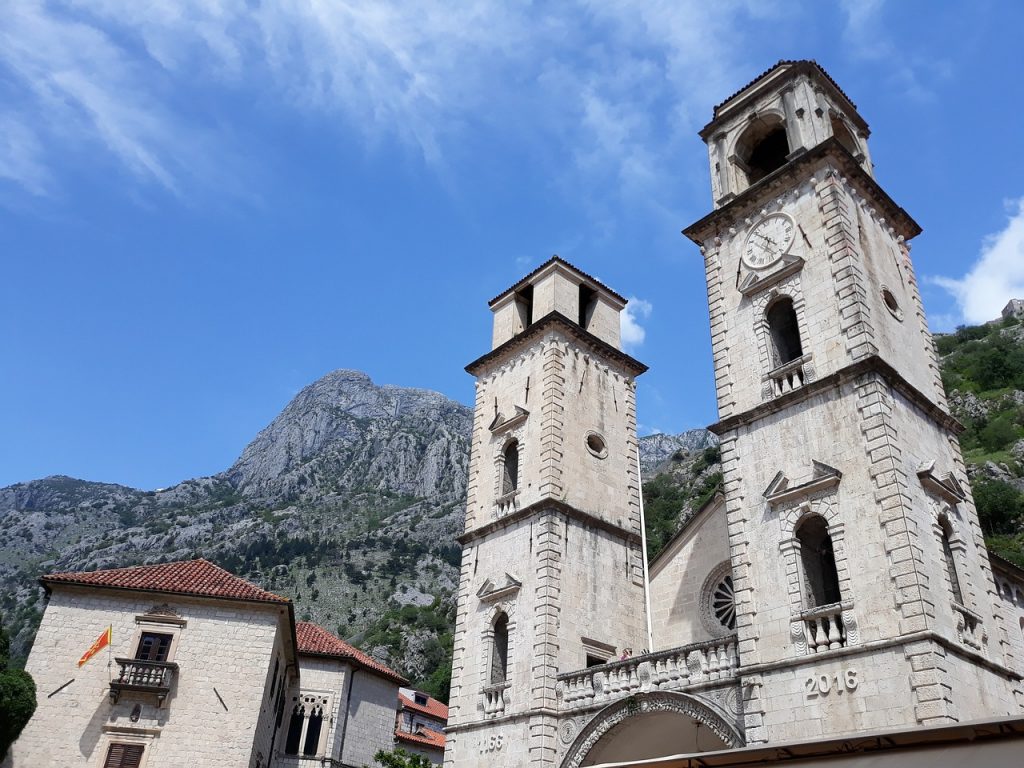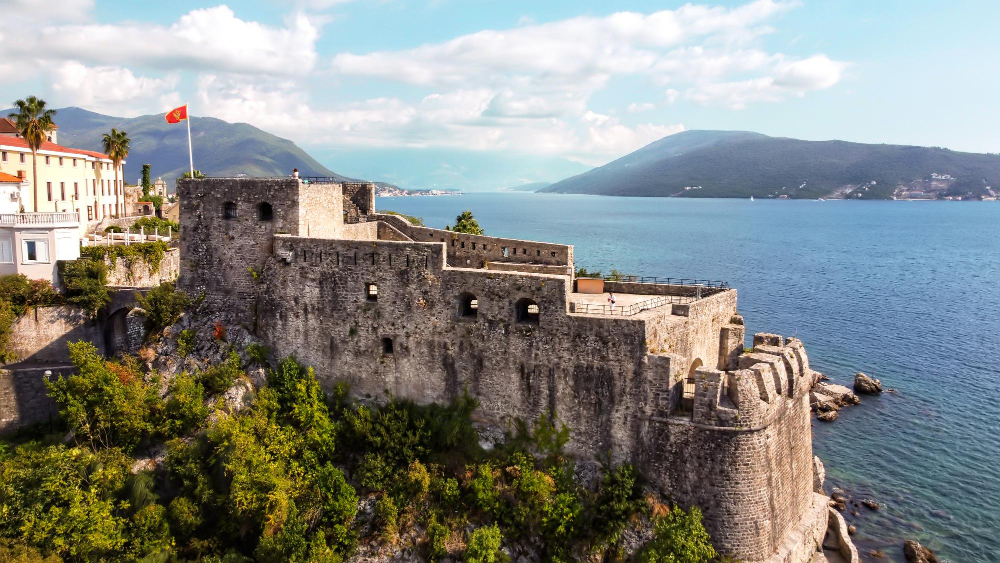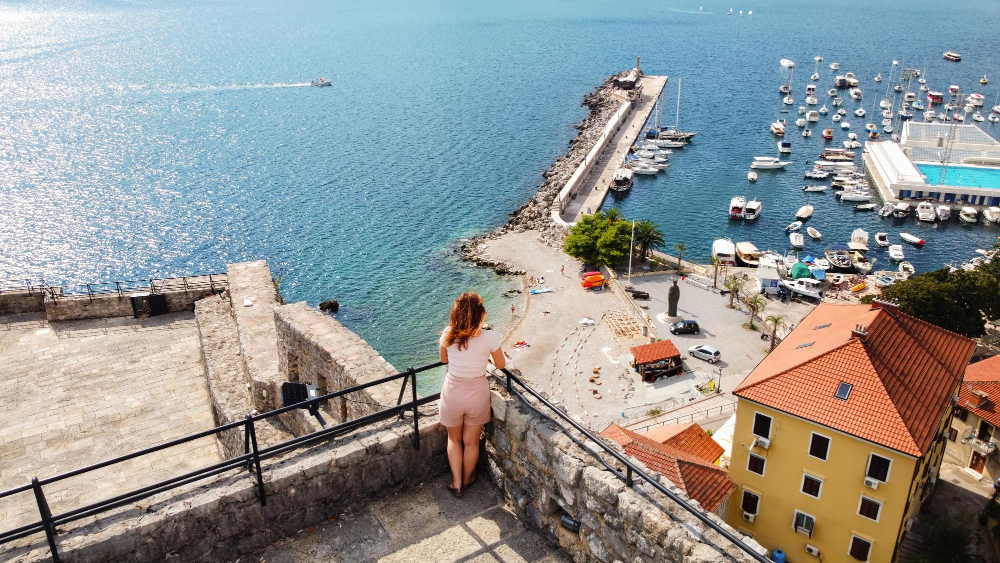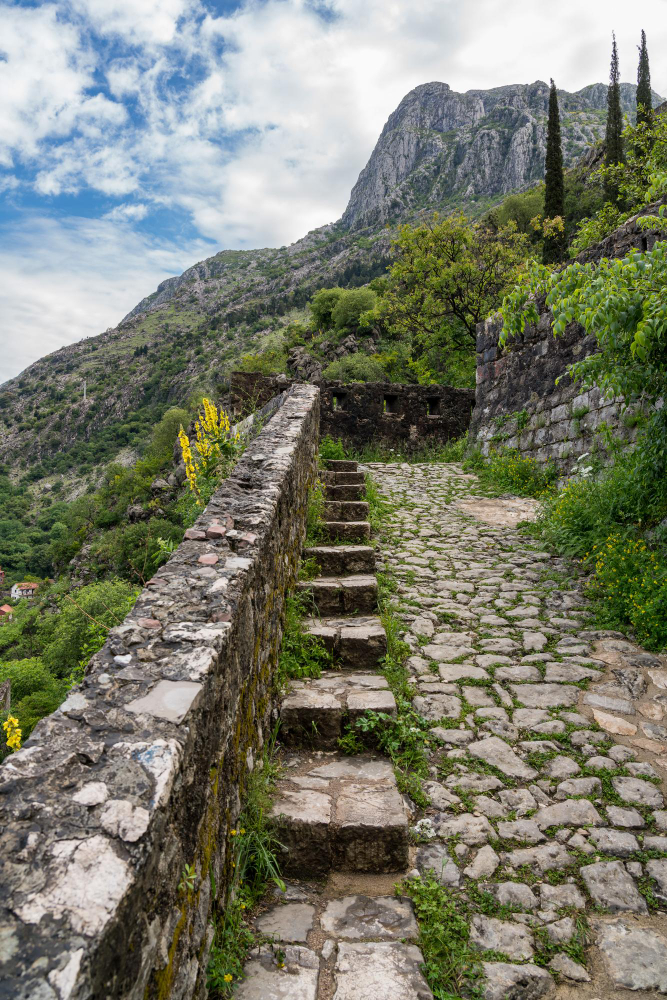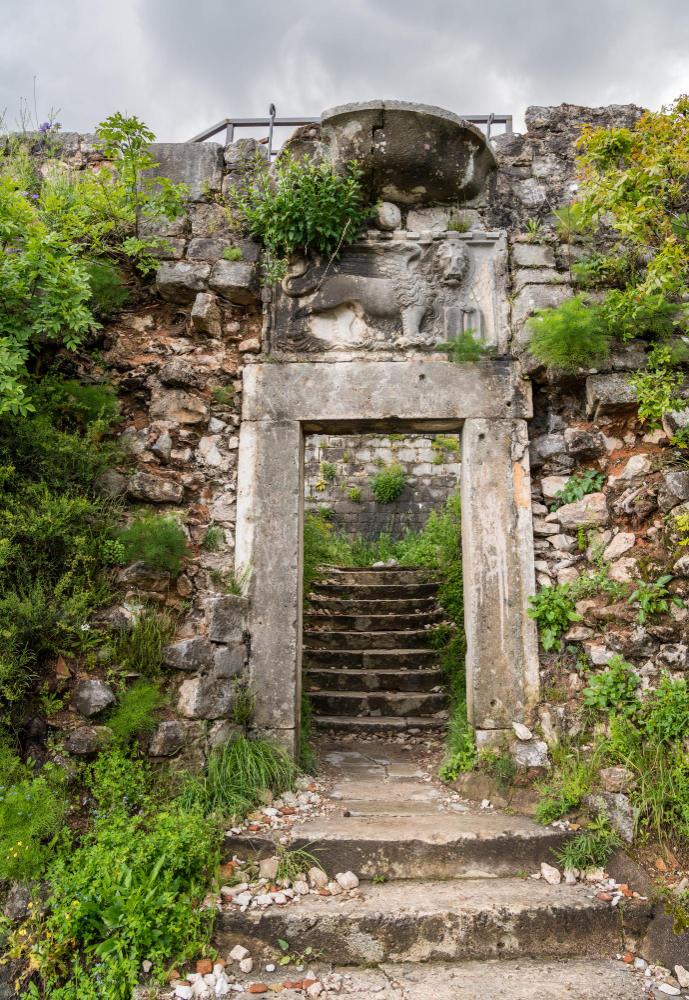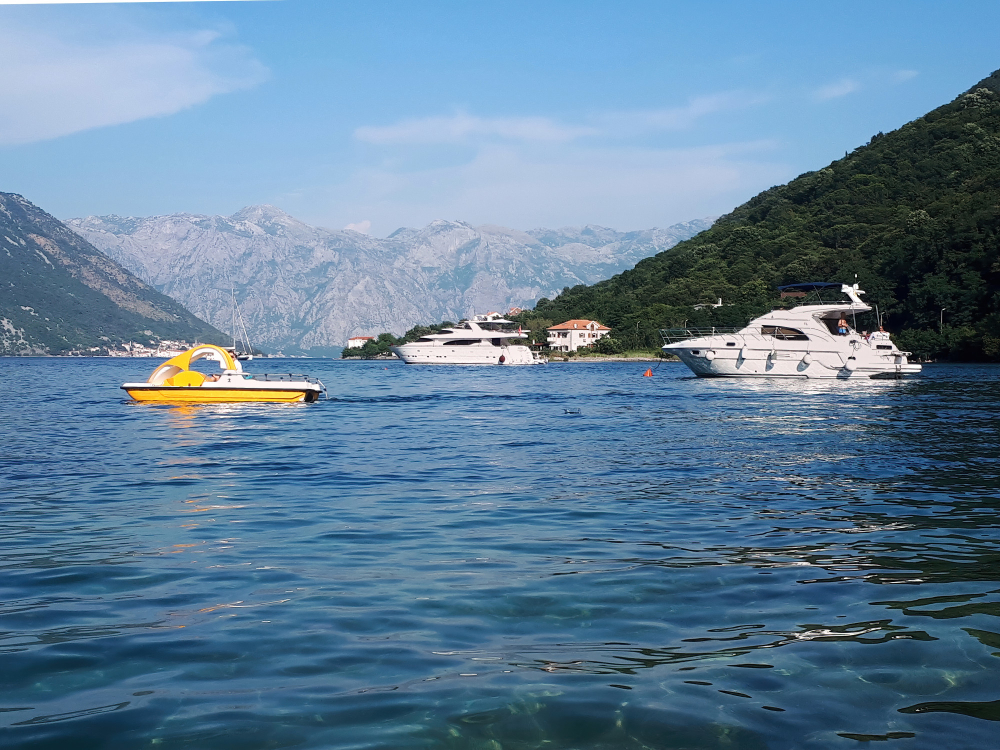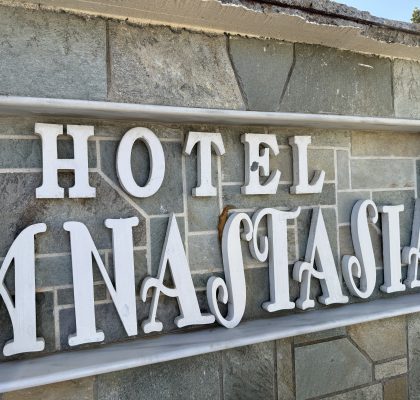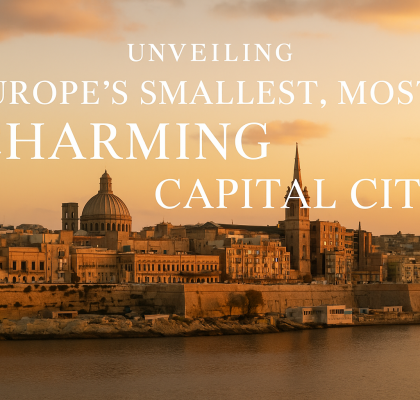Kotor is a picturesque coastal town located in Montenegro, a small Balkan country in southeastern Europe. It is situated on the Bay of Kotor, one of the most stunning natural harbors in the world. The town is known for its rich history, medieval architecture, and breathtaking scenery, making it a popular destination for tourists.
If you’re wondering what you can do or see in Kotor, well, there are lots of magnificent places that await you. First of all, Kotor’s combination of history, natural beauty, and cultural charm makes it a must-visit destination in Montenegro. Whether you explore the Old Town, venture into the bay, or simply enjoy the stunning views, Kotor offers a memorable experience for travelers seeking a mix of history, culture, and natural wonders.
- Kotor Old Town
- Kotor Fortress
- The Ladder of Kotor
- Bay of Kotor
- Maritime Museum
- Scenic Drives and Day Trips
- Local Cuisine
- Nightlife in Kotor
- Where to stay in Kotor
Kotor Old Town
The heart of Kotor is its beautifully preserved Old Town, which is a UNESCO World Heritage Site. You will absolutely fall in love with its narrow cobblestone streets, charming squares, and well-preserved medieval buildings. It is surrounded by ancient city walls that offer fantastic views of the bay and the town.
The architecture reflects a blend of different styles, including Venetian, Romanesque, Gothic, Renaissance, and Baroque, reflecting the town’s rich history and cultural influences.
The Old Town is encircled by well-preserved city walls that date back to the 9th century. The walls extend for about 4.5 kilometers and include several gates and fortifications, such as the Sea Gate and the Northern Gate.
One of the most prominent landmarks in Kotor Old Town is the St. Tryphon Cathedral (Katedrala Svetog Tripuna). Built in the 12th century and later reconstructed in Baroque style after an earthquake, the cathedral houses an impressive collection of religious art and artifacts.
The main square of Kotor Old Town is the Square of Arms (Trg od Oružja), a charming square lined with cafes and restaurants. It’s a popular gathering spot and a great place to enjoy the town’s vibrant atmosphere. So, if you’re looking for a cup of coffee with a great vibe, this is where you should stop.
Throughout the Old Town, you’ll find various historical buildings, palaces, and museums, each with its own story to tell. Some notable examples include the Pima Palace, the Beskuća Palace, and the Napoleon Theater.
Looking to do some shopping? While there are a variety of boutiques and souvenir shops, you should stop at local artisans selling crafts and handmade goods. Make sure you bring home some memorable items. It’s also a fantastic place to sample Montenegrin cuisine and enjoy local dishes at traditional restaurants.
Exploring Kotor Old Town is like stepping back in time, with its well-preserved medieval charm, historical landmarks, and stunning architecture. It’s a place to wander, get lost in the labyrinthine streets, and immerse yourself in centuries of history and culture. Whether you’re interested in history, architecture, or simply enjoy picturesque settings, Kotor Old Town offers an unforgettable experience.
Kotor Fortress
The town’s defensive fortifications, including the Fortress of St. John (also known as the Castle of San Giovanni), are a testament to Kotor’s historical significance as a fortified town. It is one of the most prominent landmarks in the region and hiking up to the fortress will reward you with panoramic views of the bay and surrounding landscapes.
The fortress dates back to the Roman and Byzantine periods, with the oldest parts believed to have been constructed in the 9th century. Over the centuries, it underwent various expansions and renovations by different ruling powers, including the Venetians. The Kotor Fortress was strategically positioned atop the hill overlooking the Bay of Kotor, providing a vantage point for observing and protecting the town and the surrounding territory.
It consists of a series of walls, gates, and defensive structures. Its defensive walls, constructed during the Venetian period, are exceptionally well-preserved and provide an impressive example of medieval fortification architecture.
You can reach the Kotor Fortress by hiking along a well-marked and scenic trail that begins near the Sea Gate in Kotor’s Old Town. The hike takes about 1.5 to 2 hours to reach the summit, with several resting points and photo opportunities along the way.
Once at the summit, you’ll be simply stunned by the panoramic views of the Bay of Kotor, the old town rooftops, and the surrounding mountains. Make sure to bring your camera, as you’ll be taking lots of photos!
The fortress is also open for nighttime visits during certain periods, offering a unique and atmospheric experience of Kotor’s bay illuminated by city lights.
There is an entrance fee or 8 EUR to access the fortress, and the revenue contributes to its ongoing maintenance and preservation
The hike to the top is rewarding, offering not only a glimpse into Kotor’s history but also unforgettable vistas that showcase the town’s unique blend of coastal and mountainous beauty. It’s an excellent opportunity for both history enthusiasts and outdoor adventurers to immerse themselves in the captivating landscapes of Montenegro.
Although the view from the top is spectacular, remember it’s not an easy climb. So, if you’re visiting on hot summer days, just keep in mind that the stairs are narrow and there are a number of them!
The Ladder of Kotor
The Ladder of Kotor, also known as the Ladder of Cattaro or Kotor Serpentine, is a spectacular and scenic mountain road located in Montenegro. It is a winding and challenging route that connects the coastal town of Kotor with the mountainous region of Lovćen National Park.
The road offers breathtaking panoramic views of the Bay of Kotor and the surrounding mountains. As you ascend, you’ll be treated to stunning vistas of the bay and the picturesque coastal landscape below.
The Ladder of Kotor is famous for its series of hairpin bends and curves, resembling a serpent’s path. The road zigzags its way up the mountainside, making for a thrilling and scenic drive. You should also know that it once served as a vital trade route between the coast and the mountainous hinterland.
The road leads to Lovćen National Park, a pristine and rugged natural area known for its diverse flora and fauna, hiking trails, and cultural landmarks. The park is also home to the Mausoleum of Petar II Petrović-Njegoš, a prominent historical figure in Montenegro.
The Ladder of Kotor is not only a scenic drive but also a gateway to Lovćen National Park, offering visitors a chance to immerse themselves in Montenegro’s natural beauty and explore the country’s rugged mountain landscapes. It’s a popular route for both tourists and locals seeking adventure and stunning vistas. So, if you think you’re up to it, then make sure you gear up properly for the ride!
Bay of Kotor
The bay itself is a natural wonder, often referred to as Europe’s southernmost fjord, due to its resemblance to a traditional fjord with its narrow shape and high surrounding mountains. However, it is technically a ria, a flooded river valley, rather than a true fjord.
Surrounded by towering mountains, the bay’s dramatic beauty is truly awe-inspiring. Also known as Boka Bay, is a stunning natural harbor located in Montenegro, on the Adriatic Sea.
The bay is renowned for its striking scenery, with steep mountains rising dramatically from the water’s edge. The contrast of the emerald blue waters against the lush green mountains creates a captivating and picturesque landscape.
The Bay of Kotor is dotted with charming coastal towns and villages, each with its unique character and cultural heritage. The most notable towns include Kotor (of course), Perast, Tivat, and Herceg Novi, each offering historical landmarks, narrow streets, and a relaxed Mediterranean ambiance.
The bay’s rich history is evident in the numerous cultural and historical sites scattered throughout the region. Notable landmarks include the Old Town of Kotor, a UNESCO World Heritage Site, and the picturesque town of Perast with its historic churches and palaces.
The bay provides excellent opportunities for water-based activities such as sailing, kayaking, and boat tours. You can explore the bay’s hidden coves, islands, and picturesque coastline from the water.
The mountains surrounding the bay offer fantastic hiking trails, providing opportunities to explore the diverse flora and fauna of the region and enjoy stunning vistas of the bay from above.
The Bay of Kotor is a true gem of Montenegro, offering visitors a chance to immerse themselves in a breathtaking and historically significant landscape. Whether you’re interested in history, nature, or simply seeking a tranquil coastal retreat, the Bay of Kotor promises a memorable and unforgettable experience.
Maritime Museum
Kotor is proud of its maritime heritage, and the Maritime Museum showcases the town’s nautical history, including ship models, old navigational instruments, and artifacts.
The Maritime Museum of Kotor, also known as Pomorski muzej Crne Gore, is dedicated to preserving and showcasing the maritime heritage and nautical history of the region. It is housed in the historical Grgurina Palace, a beautiful building that adds to the museum’s charm and ambiance. The palace itself is an architectural gem, and exploring its interior adds to the overall museum experience.
The museum houses a diverse collection of exhibits that provide insights into the maritime traditions, trade, and naval history of Kotor and Montenegro. The displays include models of old ships, navigational instruments, ancient maps, maritime artifacts, and historical documents.
It also boasts an impressive collection of ship models that showcase various types of vessels used throughout history, from traditional sailboats to warships and merchant ships.
While visiting, you can admire a wide range of nautical artifacts, including ship anchors, cannons, navigational tools, ship parts, and sailor’s equipment, providing a glimpse into the daily life of sailors and seafarers.
Visiting the Maritime Museum of Kotor offers an enriching and educational experience, while providing you with a deeper understanding of the region’s maritime past and the vital role that the sea has played in the history and culture of Kotor and Montenegro. Whether you’re a history enthusiast, a maritime buff, or simply interested in learning more about the coastal heritage of Montenegro, the museum is a must-visit attraction in Kotor.
Scenic Drives and Day Trips
The area surrounding Kotor offers scenic drives and opportunities for day trips. The nearby village of Perast is worth a visit, and the Blue Cave and Mamula Island are popular destinations for boat tours.
Perast is a picturesque town located along the bay. It’s known for its well-preserved Baroque architecture, historic churches, and its iconic islets, Our Lady of the Rocks and St. George.
Head south from Kotor to visit Budva, one of Montenegro’s most popular coastal towns. Enjoy its sandy beaches, historical Old Town, and vibrant nightlife.
Venture inland to Cetinje, the old royal capital of Montenegro. Explore its historical buildings, museums, and cultural heritage.
Drive to Skadar Lake, the largest lake in the Balkans, for boat tours, birdwatching, and the opportunity to discover quaint lakeside villages.
A short drive from Kotor, Njeguši is a traditional Montenegrin village known for its smoked ham (pršut) and cheese. Enjoy the scenic drive through the mountains and taste some local delicacies.
You can also take a boat cruise from Kotor to explore Risan and Perast from the water. This allows you to see the towns’ beautiful coastal scenery and historical landmarks from a different perspective.
These scenic drives and day trips offer diverse experiences, from coastal adventures to mountain landscapes and cultural explorations. Whether you prefer to drive along winding roads with panoramic views or embark on boat excursions to explore the bay and its islands, Kotor and its surroundings offer a plethora of opportunities to discover the natural and cultural wonders of Montenegro.
Local Cuisine
Kotor offers a variety of restaurants and cafes where you can savor local Montenegrin cuisine, which often includes fresh seafood and Mediterranean influences.
If you’re someone who is eager to explore the culinary side of places you visit, then best be sure Kotor will not disappoint!
As a coastal town, Kotor is renowned for its fresh seafood. Popular dishes include grilled fish (such as sea bass, bream, or squid), octopus salad, and black risotto (crni rižot) made with cuttlefish ink.
Buzara is a delicious and simple seafood dish prepared with mussels, clams, or shrimp cooked in white wine, garlic, and parsley, resulting in a flavorful broth. If you see it on the menu, dont hesitate in ordering it!
Njeguški Pršut is a traditional Montenegrin smoked ham, often served as an appetizer alongside local cheeses and olives. Pairs great with a delicious local wine.
Kačamak: Kačamak is a hearty and traditional Montenegrin dish made from cornmeal, potatoes, and cheese. It is a comforting and filling meal.
If you like pasta, then make sure you try Paštrovski Makaruli. This is a popular pasta dish made with thick noodles, usually served with a meat sauce or cheese.
If you’re looking for something sweet, then Priganice will calm your sweet tooth. These are small doughnuts served as a side dish or dessert, often drizzled with honey or powdered sugar.
Eager to drink something local and strong? Rakija is a traditional fruit brandy widely consumed in Montenegro. It comes in various flavors, including plum (šljivovica), grape (lozovača), and herbal (travarica).
Crnogorska Pogača is a savory pie filled with cheese, spinach, or meat, resembling a traditional Mediterranean pie. Try it if you like spinach, or pass it otherwise.
When dining in Kotor, you’ll have the opportunity to savor a wide range of dishes that celebrate the region’s local produce and culinary traditions. The town’s restaurants, taverns, and local markets offer plenty of options to experience the rich and delicious flavors of Kotor’s cuisine.
Nightlife
Kotor offers a vibrant nightlife scene, especially during the tourist season. While it may not be as bustling as larger cities, the town still has a variety of places to go for an enjoyable evening. Here are some popular spots for nightlife in Kotor:
Within the walls of Kotor’s Old Town, you’ll find numerous bars and restaurants that come alive at night. Enjoy a drink in one of the cozy bars or dine al fresco while soaking in the atmosphere of the charming medieval streets.
The waterfront promenade along the Bay of Kotor is a lively area with several bars and cafes. It’s a great place to enjoy a drink, listen to live music, and take in the beautiful views of the bay.
There are also a few nightclubs in and around Kotor where you can dance and socialize. Keep in mind that their popularity may vary depending on the season and specific events.
During the summer, Kotor hosts various cultural events, concerts, and festivals that extend into the evening hours. Check the local event listings to see what’s happening during your visit.
Joining a pub crawl or a guided nightlife tour can be a fun way to explore the town’s nightlife while meeting fellow travelers and if you’re in the mood for some gambling, there is a casino located just outside the Old Town of Kotor.
Remember that nightlife in Kotor may be more vibrant during the summer months when tourists flock to the region. During the off-season, some places may have reduced operating hours or may not be as lively. As with any nightlife, always be mindful of your surroundings, especially when enjoying alcoholic beverages, and take necessary precautions to ensure a safe and enjoyable experience.
Where to Stay in Kotor
Kotor has hotels and places to accommodate your needs and budget, so don’t be afraid to book your stay. The town is generally heartwarming and people are very friendly.
If you’re looking for a place to stay, then you can find one in the map below. Make sure to read the reviews and enjoy your stay!
Booking.com

